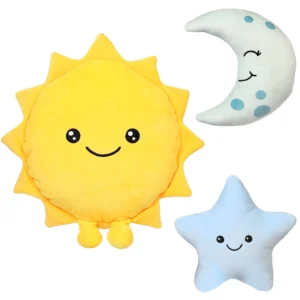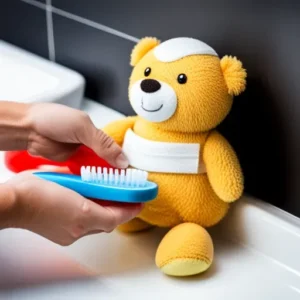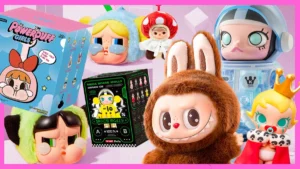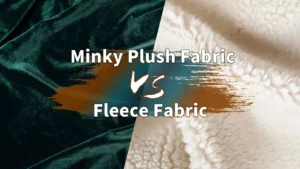Plushies are more than just toys — they’re comfort companions, cherished keepsakes, and often lifelong friends. But have you ever paused to wonder what makes that soft bear or cuddly character so irresistibly touchable? The secret lies in the fabric. Choosing the right fabric for plushies is a blend of art, science, and innovation, influencing softness, durability, safety, and even environmental impact.
In short, the best fabrics for plushies combine exceptional softness, safety compliance, durability, and sometimes sustainability — fabrics like minky, velboa, fleece, and eco-friendly polyester blends top the list. Each offers unique benefits tailored to different buyer needs and manufacturing constraints.
Imagine a child clutching their favorite plush toy on a chilly night. That warm, soft feeling isn’t luck — it’s the result of careful fabric selection that delivers comfort and joy. Ready to dive deeper into the world of plush fabrics? Let’s unpack the top choices and what makes them stand out.
1. What Are the Most Popular Fabrics Used for Plushies Today?

The plush toy industry primarily uses polyester-based fabrics like minky, velboa, fleece, and cotton blends due to their softness, durability, and ease of care.
Minky Fabric: The Gold Standard for Softness
Minky is a plush, microfiber polyester fabric known for its silky smoothness and exceptional softness. Popular for baby blankets and high-end plush toys, it offers a velvety surface that mimics natural fur without the drawbacks of animal fibers. However, minky’s dense weave can increase manufacturing costs and slow down production.
Velboa: Durable and Cost-Effective
Velboa is a short-pile, synthetic fabric that balances softness with durability. It’s less expensive than minky and offers excellent printability for colorful patterns. Velboa is ideal for toys that need to endure heavy use while maintaining a plush feel.
Fleece: Warmth and Flexibility
Fleece fabrics, often made from polyester or polyester blends, provide softness with additional insulation. While not as silky as minky, fleece adds warmth and is widely used in larger plush toys and wearable plush products like hats or blankets.
Cotton Blends: Natural Touch with Some Limitations
Cotton blends offer breathability and a more natural feel. However, they lack the plush softness of synthetic fibers and tend to wear out faster, making them less common for high-end plush toys but favored for eco-conscious markets.
Other Notables: Chenille, Velour, and Faux Fur
These fabrics are chosen for specific textures and visual appeal, often used in collectible or designer plushies. Faux fur, for instance, replicates animal fur’s fluffiness but varies greatly in quality and price.
Consumer Influence:
Modern buyers seek not only softness but also hypoallergenic and easy-care fabrics. This pushes manufacturers to balance cost with fabric innovation and safety standards.
| Fabric Type | Key Features | Pros | Cons | Typical Uses |
|---|---|---|---|---|
| Minky | Plush microfiber polyester, silky smooth | Ultra-soft, velvety, baby-friendly | Higher manufacturing cost, slower production | Baby blankets, high-end plush toys |
| Velboa | Short-pile synthetic fabric | Durable, cost-effective, good printability | Less soft than minky | Mass-market plush toys |
| Fleece | Polyester or polyester blends | Soft, warm, flexible | Not as silky as minky | Larger plush toys, wearable plush products (hats, blankets) |
| Cotton Blends | Natural fiber blends | Breathable, natural feel | Less plush softness, less durable | Eco-conscious plush toys |
| Chenille, Velour, Faux Fur | Textured, visually appealing fabrics | Unique textures, collectible appeal | Quality and price vary, faux fur can be inconsistent | Collectible/designer plushies |
2. Which Fabrics Offer the Softest Touch and Best Comfort for Plushies?
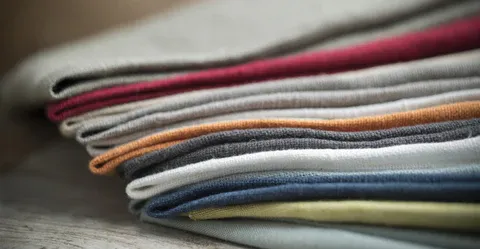
Minky, velboa, and fleece are widely recognized as the softest fabrics for plush toys, providing a cozy and cuddly feel that appeals to all ages.
What Makes a Fabric Soft?
Softness depends on fiber type, pile length, and fabric finishing. Longer, finer fibers create plush surfaces, while finishing treatments like brushing enhance tactile appeal.
Comparing Minky and Velboa
Minky stands out with its ultra-soft, dense pile that feels silky against the skin. Velboa, with shorter fibers, provides softness but with more durability, ideal for plush toys that face rough play.
Fleece Variations
Different fleece types (e.g., microfleece, polar fleece) offer varying softness and warmth. Microfleece mimics minky softness at lower cost but may pill over time.
Balancing Softness and Durability
Extremely soft fabrics can be fragile, so manufacturers must carefully select materials to maintain softness without sacrificing lifespan.
User Experience Insight
Children and adults alike rate softness as the #1 factor when choosing plush toys, influencing repeat purchases and brand loyalty.
| Fabric Type | Softness Level | Key Characteristics | Durability | Cost Consideration | Typical Use Cases |
|---|---|---|---|---|---|
| Minky | Ultra-soft | Dense, silky pile; feels smooth against skin | Moderate | Higher cost | Premium plush toys, baby items |
| Velboa | Soft | Shorter fibers, plush but tougher | High | More affordable | Durable, everyday plush toys |
| Fleece (Microfleece, Polar Fleece) | Soft to medium-soft | Varies by type; warm and flexible | Moderate to high | Generally moderate | Larger plush, wearable plush |
3. How Do Durability and Safety Standards Affect Fabric Selection for Plush Toys?
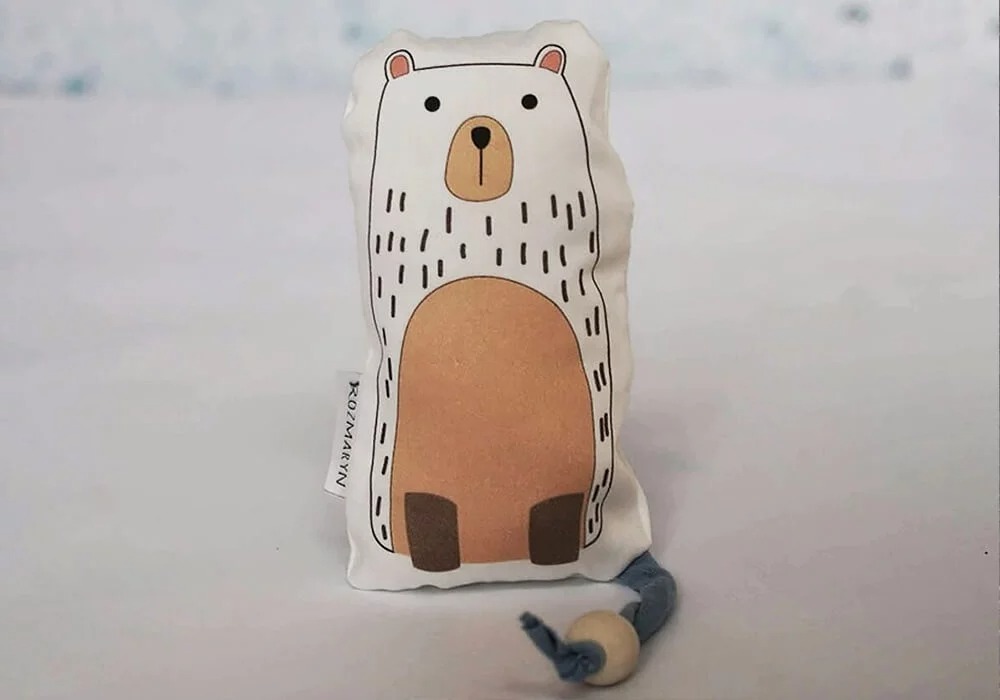
Durability and adherence to international safety standards are critical when selecting fabrics for plush toys to ensure long-lasting products and user protection.:
Durability Factors:
Fabrics must withstand repeated hugging, washing, and sometimes chewing. Synthetic fibers like polyester excel in durability compared to natural fibers.
Safety Certifications and Regulations:
Plush fabrics must comply with standards such as ASTM F963 (US), EN71 (EU), and CPSIA regulations ensuring non-toxicity, flame resistance, and absence of harmful substances.
Testing Protocols:
Rigorous lab tests for fabric strength, colorfastness, and allergenicity guide fabric choice and supplier selection.
Trade-offs Between Softness and Strength:
Some fabrics sacrifice softness to meet durability and safety needs. Manufacturers innovate with blends and finishes to optimize both.
Real-World Example:
Kinwin’s plush factory integrates continuous quality control, digital fabric inspection, and certified materials to guarantee compliance and durability without compromising softness.
| Aspect | Details |
|---|---|
| Durability Factors | Fabrics must endure hugging, washing, and chewing; synthetic fibers like polyester are most durable. |
| Safety Certifications & Regulations | Must meet ASTM F963 (US), EN71 (EU), CPSIA standards to ensure non-toxicity, flame resistance, and safety. |
| Testing Protocols | Lab tests assess fabric strength, colorfastness, allergenicity to ensure quality and compliance. |
| Trade-offs Between Softness & Strength | Some fabrics lose softness to meet durability and safety; blends and finishes are used to balance both. |
| Real-World Example | Kinwin uses continuous quality control, digital fabric inspection, and certified materials to maintain softness and compliance. |
4. Do Eco-Friendly and Sustainable Fabrics Meet Plush Toy Industry Needs?

Sustainable fabrics like recycled polyester and organic cotton blends are gaining traction, though balancing eco-friendliness with softness, durability, and cost remains a challenge.
Types of Sustainable Fabrics:
Recycled polyester derived from PET bottles, organic cotton, and bamboo-based fabrics offer greener alternatives.
Challenges in Sustainability:
Eco-friendly fabrics can have lower softness or durability and typically come with higher costs and supply chain complexities.
Consumer Demand Trends:
Growing environmental awareness among consumers pushes manufacturers toward greener materials despite potential trade-offs.
Innovations in Sustainable Plush Fabrics:
Advancements include bio-based fibers and blended fabrics that enhance softness and resilience while reducing environmental impact.
Case Study:
Kinwin is exploring recycled microfiber fabrics with finishes that replicate minky softness, aiming for products that meet sustainability goals without quality loss.
| Topic | Details |
|---|---|
| Types of Sustainable Fabrics | Recycled polyester (from PET bottles), organic cotton blends, bamboo-based fabrics |
| Challenges in Sustainability | Often lower softness or durability; higher costs and supply chain complexities |
| Consumer Demand Trends | Increasing eco-awareness drives demand for greener materials despite trade-offs |
| Innovations | Bio-based fibers and blends improve softness and resilience while reducing environmental impact |
| Case Study | Kinwin develops recycled microfiber fabrics with minky-like softness, balancing quality and sustainability |
5. Is Fabric Maintenance and Cleaning Ease a Key Factor for Plush Toy Buyers?
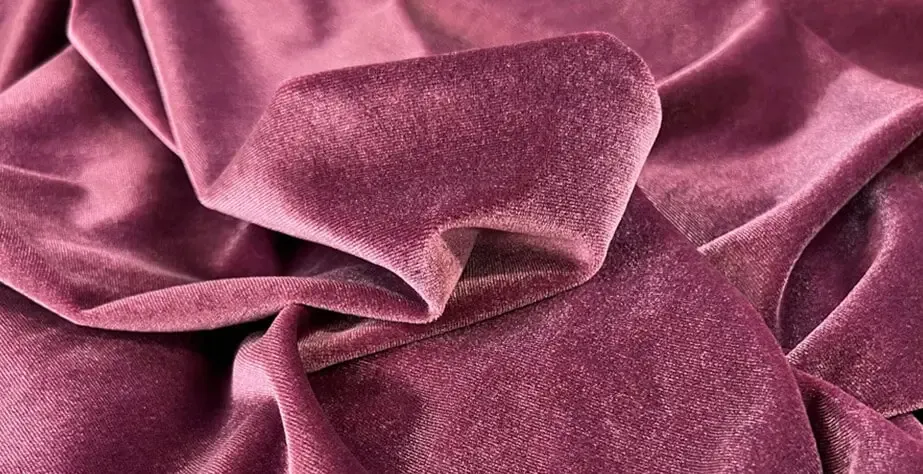
Yes, easy-to-clean and hypoallergenic fabrics like polyester fleece and velboa rank high among buyers who want safe, low-maintenance plush toys.
Cleaning Requirements:
Families prioritize plushies that can be machine-washed or spot-cleaned without damage.
Allergen Resistance:
Synthetic fibers often resist dust mites and allergens better than natural fibers, appealing to sensitive consumers.
Fabric Treatments for Easy Care:
Anti-pilling and stain-resistant finishes extend fabric life and ease maintenance.
Balancing Maintenance with Aesthetics:
Some high-end fabrics require delicate care, potentially limiting market reach. Manufacturers offer multiple fabric grades catering to different needs.
User Feedback:
Surveys show 70% of plush toy buyers consider ease of cleaning a top purchase factor, especially for baby and toddler products.
| Aspect | Details |
|---|---|
| Cleaning Requirements | Preference for machine-washable or easy spot-clean fabrics without damage |
| Allergen Resistance | Synthetic fibers better resist dust mites and allergens, favored by sensitive buyers |
| Fabric Treatments | Anti-pilling and stain-resistant finishes help prolong fabric life and ease cleaning |
| Maintenance vs. Aesthetics | High-end fabrics may need delicate care, so multiple fabric grades address different needs |
| User Feedback | 70% of buyers rank ease of cleaning as a top factor, especially for baby and toddler plush |
6. Are There Emerging Innovations in Plush Toy Fabrics?

New technologies such as smart textiles, recycled fiber blends, and bio-based fabrics are revolutionizing plush fabric production, merging functionality with sustainability.
Smart Textiles:
Fabrics embedded with sensors or temperature regulation features add interactive value to plushies, appealing to tech-savvy consumers.
Recycled and Bio-Based Fibers:
Using post-consumer plastics and renewable sources reduces environmental impact and opens new marketing avenues.
Enhanced Fabric Finishes:
Nano-coatings for stain resistance and antimicrobial properties improve plush hygiene and longevity.
Industry Collaboration:
Manufacturers like Kinwin partner with textile innovators to pilot eco-friendly and high-performance plush fabrics.
Market Outlook:
As consumers demand innovation and responsibility, the plush industry is poised to embrace fabrics that combine softness, safety, sustainability, and smart features.
| Innovation Area | Description |
|---|---|
| Smart Textiles | Fabrics with embedded sensors or temperature regulation, adding interactive features to plushies |
| Recycled and Bio-Based Fibers | Use of post-consumer plastics and renewable fibers to reduce environmental impact and open new markets |
| Enhanced Fabric Finishes | Nano-coatings providing stain resistance and antimicrobial properties to improve hygiene and durability |
| Industry Collaboration | Partnerships like Kinwin’s with textile innovators to develop eco-friendly, high-performance fabrics |
| Market Outlook | Growing consumer demand for softness, safety, sustainability, and smart fabric features driving industry evolution |
Summary Table: Key Fabric Attributes for Plush Toys
| Fabric Type | Softness | Durability | Eco-Friendly | Maintenance | Popular Uses |
|---|---|---|---|---|---|
| Minky | Ultra-soft | Moderate | No | Gentle wash | Baby plush, luxury toys |
| Velboa | Soft | High | No | Machine washable | Mass-market plushies |
| Fleece | Soft to medium | High | Some blends | Easy care | Wearable plush, blankets |
| Cotton Blends | Medium | Low | Yes | Easy care | Organic plush lines |
| Faux Fur | Very soft | Varies | Some types | Gentle wash | Collectibles, premium |
| Recycled Polyester | Medium-soft | High | Yes | Machine washable | Sustainable plush lines |
Ready to Customize Your Plush Toys with the Best Fabrics?
Choosing the right fabric is key to delivering plush toys that delight customers while meeting safety, durability, and sustainability standards. At Kinwin, we specialize in tailoring plush fabric choices to your unique product needs, combining advanced manufacturing, stringent quality control, and innovation to bring your plush toy ideas to life.
Contact us today for a free consultation and quotation — let’s craft the perfect plushies that captivate your market and reflect your brand’s commitment to quality and eco-consciousness.




